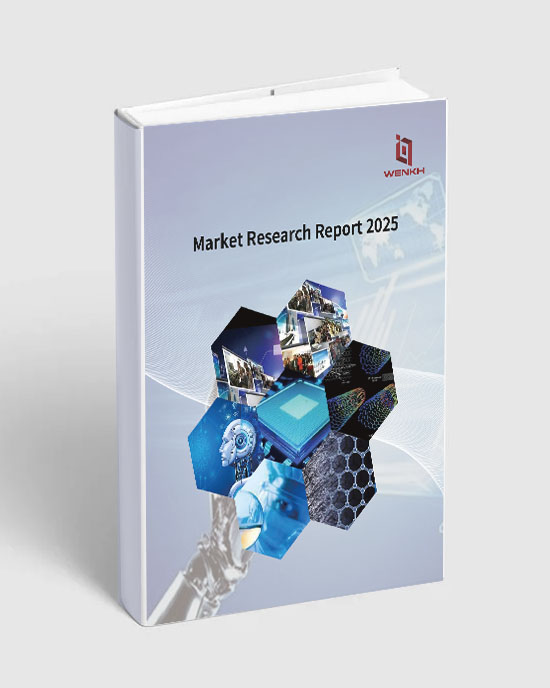
Global Hydrogen Storage Alloy Market Competitors, Segment Types and Downstream Applications Research Report 2025



Research Summary
Hydrogen storage alloy is a type of metal alloy capable of reversibly absorbing and releasing hydrogen gas, making it a key material in rechargeable nickel-metal hydride (NiMH) batteries and hydrogen fuel storage systems. These alloys, often composed of rare earth or transition metals such as lanthanum, nickel, cobalt, or titanium, form metal hydrides when exposed to hydrogen under certain pressure and temperature conditions. Their ability to store hydrogen in solid form enhances safety and energy density compared to gaseous or liquid hydrogen storage methods. Hydrogen storage alloys play a critical role in clean energy technologies, offering reliable, efficient, and compact solutions for energy storage and fuel cell applications.
According to WENKH research statistics, the global Hydrogen Storage Alloy market size will reach 320.01 Million USD in 2025 and is projected to reach 490.14 Million USD by 2032, with a CAGR of 6.28% (2025-2032). Among them, the Asia-Pacific Hydrogen Storage Alloy market is undergoing rapid changes, reaching Million USD in 2025, accounting for approximately % of the global market share. It is projected to reach Million USD by 2032.
The global Hydrogen Storage Alloy market is highly competitive, with key market players including Santoku, American Elements, Nippon Denko, Mitsui-Kinzoku, Advanced Refractory Metals, Japan Metals & Chemicals, Zhongke Xueda New Energy Technology, Shenjiang Technology, Whole Win, AE&M JITRI, Xiamen Tungsten, Baotou FDK, China Northern Rare Earth, Jiangxi Tungsten, etc. This report categorizes the competitive landscape of the global Hydrogen Storage Alloy market into three tiers based on annual revenue, with the top three market players holding approximately % of the total market share.
This report provides an in-depth analysis of the global Hydrogen Storage Alloy market, including market size, price trends, market status and future development prospects. It particularly focuses on the market share, product characteristics, pricing, revenue, sales volume and gross profit margin of major manufacturers in the global Hydrogen Storage Alloy industry. Additionally, this report provides an in-depth analysis of the market status and future development trends of different segments of Hydrogen Storage Alloy and their downstream application fields.
In terms of data coverage, this report includes extensive time-series data. Historical data spans from 2020 to 2024, providing a solid foundation for analyzing market development trends. The year 2025 is used as a base year to accurately assess the current market landscape, while forecast data extends from 2026 to 2032, using scientific analysis methods and models to offer forward-looking projections and insights into the market's future trajectory. This provides valuable reference information for industry participants and stakeholders.
The report covers countries including United States, China, Germany, Japan, France, South Korea, United Kingdom, India, Italy, Brazil, Mexico, Indonesia, Vietnam and South Africa. It particularly focuses on the revenue and sales volume of Hydrogen Storage Alloy in these countries, as well as the product segmentation and downstream application market size of each country. The report provides an in-depth analysis of the regional distribution and future development trends of the Hydrogen Storage Alloy market. By considering local policies, this report evaluates the market prospects of Hydrogen Storage Alloy in each country, aiming to help companies gain a comprehensive understanding of the industry characteristics and development potential in different regions, optimize regional business layout, and develop precise market strategies to achieve global development goals.
This report places significant emphasis on data quality and reliability, leveraging a wide range of data sources to ensure accuracy and validity. Primary data collection is conducted through multiple channels, including in-depth interviews with senior corporate executives, industry experts, supply chain participants, and end consumers. This helps to gain insights into corporate strategic planning, industry policies, supply chain dynamics, and user experiences. Secondary data sources cover an extensive range, including authoritative government statistics, customs databases, industry related reports, third-party paid databases, investment research reports, academic studies, corporate financial statements, real-time media updates, and information from international organizations, all of which serve as a solid foundation for data verification and analysis.
Companies Covered
Santoku
American Elements
Nippon Denko
Mitsui-Kinzoku
Advanced Refractory Metals
Japan Metals & Chemicals
Zhongke Xueda New Energy Technology
Shenjiang Technology
Whole Win
AE&M JITRI
Xiamen Tungsten
Baotou FDK
China Northern Rare Earth
Jiangxi Tungsten
Product Segment
AB5 Type
AB2 Type
AB Type
A2B Type
Others
Product Application
Battery Industry
Energy Storage Industry
Chapter Scope
Chapter 1: Product Statistical Scope, Product Segmentation Types and Downstream Applications, Overall Market Size, Current Status and Development Prospects
Chapter 2: Global Hydrogen Storage Alloy Industry Chain Analysis
Chapter 3: Global Hydrogen Storage Alloy Industry Environment Analysis and Porter's Five Forces Analysis
Chapter 4: Analysis of the Competitive Landscape of Major Companies in the Global Hydrogen Storage Alloy Market (Market Share, Product Revenue and Sales Volume Comparison, Tier Division, Corporate Expansion and M&A Trends)
Chapter 5: Analysis of Global Major Companies (Company Profiles, Product Specifications and Features, Product Revenue, Product Sales Volume, Product Average Price and Product Gross Profit Margin)
Chapter 6: Global Hydrogen Storage Alloy Market Analysis by Countries, Product Segment and Downstream Application (Sales Volume, Revenue and Average Price)
Chapter 7: United States Hydrogen Storage Alloy Market Size, Product Segment, Downstream Application Analysis (Sales Volume, Revenue and Average Price)
Chapter 8: China Hydrogen Storage Alloy Market Size, Product Segment, Downstream Application Analysis (Sales Volume, Revenue and Average Price)
Chapter 9: Germany Hydrogen Storage Alloy Market Size, Product Segment, Downstream Application Analysis (Sales Volume, Revenue and Average Price)
Chapter 10: Japan Hydrogen Storage Alloy Market Size, Product Segment, Downstream Application Analysis (Sales Volume, Revenue and Average Price)
Chapter 11: France Hydrogen Storage Alloy Market Size, Product Segment, Downstream Application Analysis (Sales Volume, Revenue and Average Price)
Chapter 12: South Korea Hydrogen Storage Alloy Market Size, Product Segment, Downstream Application Analysis (Sales Volume, Revenue and Average Price)
Chapter 13: United Kingdom Hydrogen Storage Alloy Market Size, Product Segment, Downstream Application Analysis (Sales Volume, Revenue and Average Price)
Chapter 14: India Hydrogen Storage Alloy Market Size, Product Segment, Downstream Application Analysis (Sales Volume, Revenue and Average Price)
Chapter 15: Italy Hydrogen Storage Alloy Market Size, Product Segment, Downstream Application Analysis (Sales Volume, Revenue and Average Price)
Chapter 16: Brazil Hydrogen Storage Alloy Market Size, Product Segment, Downstream Application Analysis (Sales Volume, Revenue and Average Price)
Chapter 17: Mexico Hydrogen Storage Alloy Market Size, Product Segment, Downstream Application Analysis (Sales Volume, Revenue and Average Price)
Chapter 18: Indonesia Hydrogen Storage Alloy Market Size, Product Segment, Downstream Application Analysis (Sales Volume, Revenue and Average Price)
Chapter 19: Vietnam Hydrogen Storage Alloy Market Size, Product Segment, Downstream Application Analysis (Sales Volume, Revenue and Average Price)
Chapter 20: South Africa Hydrogen Storage Alloy Market Size, Product Segment, Downstream Application Analysis (Sales Volume, Revenue and Average Price)
Chapter 21: Research Conclusion
Chapter 22: Methodology and Data Source
Purpose and Value of the Report
Market Trend Insights: Analyze industry trends, market dynamics, and future growth potential to help companies forecast changes and develop strategic plans.
Competitive Landscape Analysis: Understand key players' revenue segmentation, strategies, market share, and business models to guide competitive decisions.
Investment Decision Support: Provide feasibility analysis through market size, growth rate, demand trends, and potential risks for informed investment decisions.
Target Customer and Demand Analysis: Examine consumer behavior, purchasing preferences, and pain points to optimize products and improve market penetration.
Policy and Regulatory Insights: Interpret relevant industry policies to ensure compliance and mitigate regulatory risks.
Business Model Optimization: Offer data-driven suggestions for enhancing business models and improving profitability.






